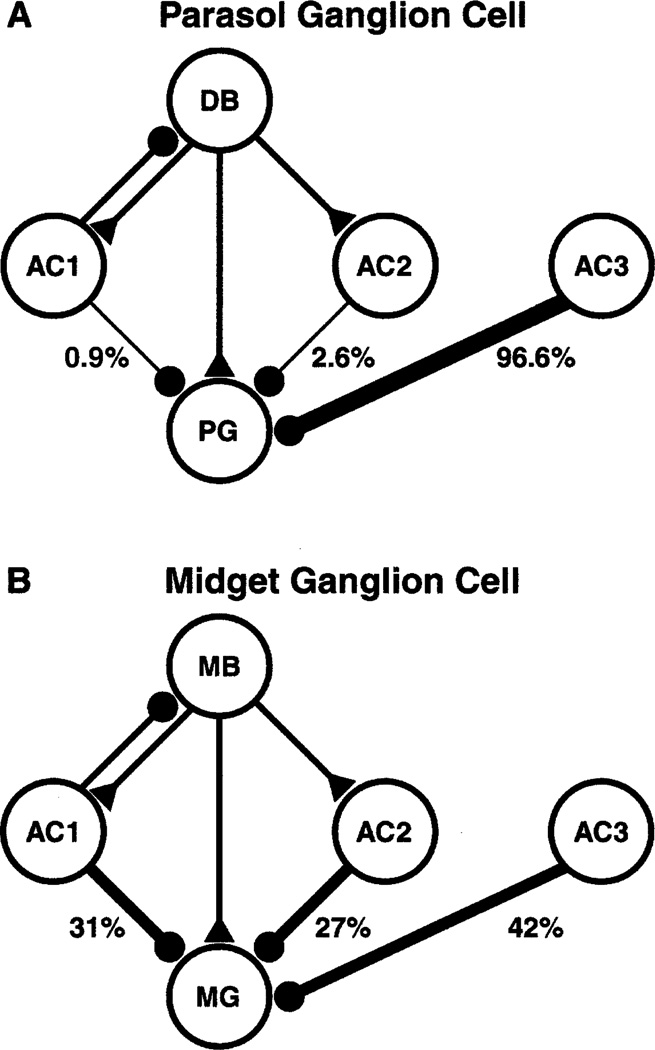Fig. 3.
Inputs to parasol (A) and midget (B) ganglion cells. A: The parasol ganglion cell (PG) receives excitatory input (triangle) from a diffuse bipolar cell (DB) and inhibitory input (circles) from three types of amacrine cells (AC). The frequencies of each type of input are indicated below each amacrine cell. AC1 receives input from the same diffuse bipolar cell as the parasol cell and it also makes an inhibitory feedback synapse onto that bipolar cell. AC2 receives input from the same diffuse bipolar cell but does not feed back. AC3 receives input from a different bipolar cell; the major inhibitory input to the parasol cell, by far, is from this type of amacrine cell. B: The midget ganglion cell (MG) receives input from a midget bipolar cell (MB); otherwise the abbreviations are the same as in A. Note that the majority of the inhibitory input to the midget ganglion cell comes from AC1 and AC2, the amacrine cells that receive input from the same midget bipolar cell providing its excitatory input. Data in A are from this study, and the data in B are from Calkins and Sterling, 1996.

